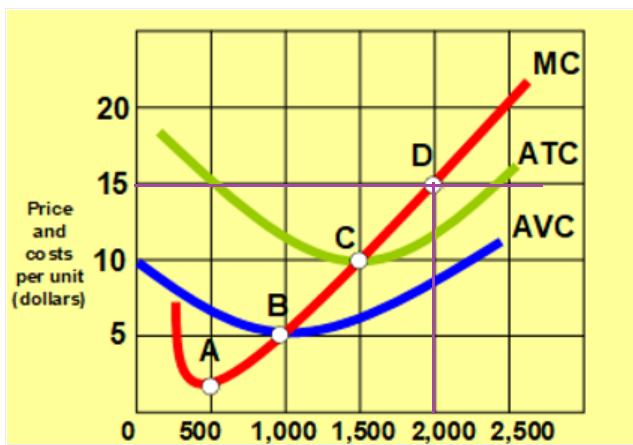The graph below provides a perfectly competitive graph for a firm in the short run, complete 1a – 1d using the graph. a. Assume the price of the firm’s product in the graph is $15 per unit. The firm will produce how many units per week, Why? b. At what price would the firm earn a zero economic profit in the short-run? Why? c. If the price the firm faces for it’s product is $6 per unit. What should the firm do? d. Assume the price of the firm’s product in Exhibit 1 is $10 per unit. The maximum profit the firm earns is? Why?
The graph below provides a
a. Assume the
b. At what price would the firm earn a zero economic profit in the short-run? Why?
c. If the price the firm faces for it’s product is $6 per unit. What should the firm do?
d. Assume the price of the firm’s product in Exhibit 1 is $10 per unit. The maximum profit the firm earns is? Why?

Answer:
In perfect competition, the equilibrium occurs where the price is equal to the marginal cost. The corresponding quantity will be the equilibrium quantity.
(a).

According to the above figure, at the price of $15 the equilibrium occurs at point D. The corresponding equilibrium quantity is 2000.
The firm will produce 2000 units per week.
Step by step
Solved in 4 steps with 2 images









